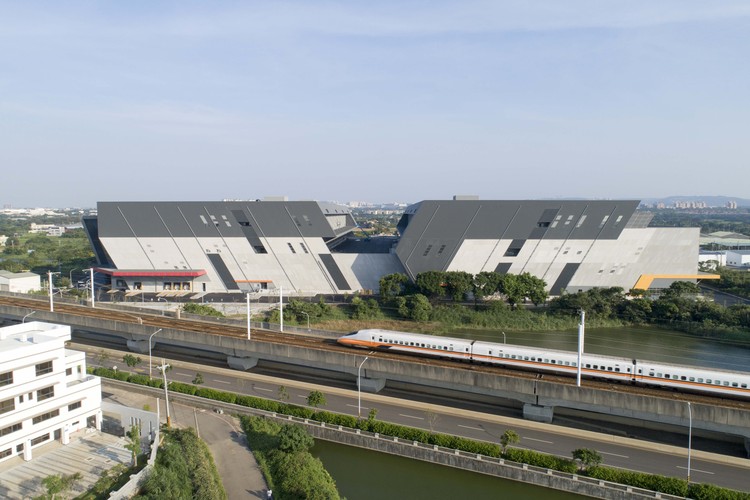Terminal in Ven FOJAB arkitekter
2012-06-08 00:00
架构师提供的文本描述。项目组:Stefan Johansson(设计小组组长)、Joachim Lundquist(主管合伙人、首席建筑师)、Kerstin Sigbo、Helen Brunsson、Martin Montelin(建筑师)、Therese Andersson(景观建筑师)、sa Swanberg(室内建筑师)、Viveca Rosencrantz(照明协调员)
Text description provided by the architects. Project Team: Stefan Johansson(Design Team Leader), Joachim Lundquist(Partner in charge, Principal architect), Kerstin Sigbo, Helena Brunsson, Martin Montelin (Architects), Therese Andersson (Landscape architect), Åsa Swanberg(Interior Architect), Viveca Rosencrantz (Lighting coordinator)
该大楼的主要功能是为往返于Ven岛的人们提供一个渡轮终点站,位于瑞典和丹麦之间的声音中。它为人员的等候空间、售票和办公室、行政和房间提供便利.此外,它还设有Landskrona市的旅游办公室和一个单独的维修船只的机械车间。
The main function of the building is a ferry terminal for people travelling to and from the island Ven, located in the sound between Sweden and Denmark. It facilitates waiting spaces, ticket sales and –offices, administration and rooms for the personnel. Furthermore it houses the tourist office for the city of Landskrona and a separate mechanical workshop for maintenance of the boats.
该地点被授予和新的码头已经建立在码头上。这些建筑精心布置,可以在18世纪严格的兰斯克洛纳城市结构中发挥作用,但也将在斯凯普布伦地区的广阔开阔地带,作为一个独立的旅游展馆运作。在这种情况下,这座建筑应该没有后背,而是面向正面、开放和入口的四面八方。
The site was given and new docks already established on the quay. The buildings are carefully placed to play part in the strict 18th century urban structure of Landskrona, yet set to operate as a freestanding travelling pavilion at the vast openness of the Skeppsbron area. Under these circumstances, the building was to have no backside, instead facing all directions with frontsides, openness and entrances.
这个概念是基于旅行的想法,这是关于期望和等待。终端由一个包含所有服务功能的简单核心组成。这个中心周围有一层等候空间,码头上有天气保护区,供人们在室内和室外居住。这反映在物质性的概念中,而建筑体积则是用镀锌钢板覆盖的,这些钢板能经受住码头上严酷的条件。然后,人类互动和接触的空间被雕刻成金属体,暴露在温暖、欢迎和保护的地方等待和到达。
The concept is based on the idea of travelling, which is about expectations and waiting. The terminal consists of a simple core containing all serving functions. This core is surrounded with a layer of waiting spaces, weather protected areas on the quay for people to dwell, indoors and outdoors. This is reflected in the materiality concept, whereas the building volume is clad with sheets of galvanized steel that withstands the harsh conditions on the dock. Spaces for human interaction and contact are then carved into the metal body exposing warm, welcoming and protected places for waiting and arrival.
在室外,这座建筑被涂满油的橡木做成的竖条覆盖着,墙和天花板都是。在室内,木表面继续作为槽橡木板。地面采用现浇混凝土、无烟煤灰白色和抛光磨砂.在外面的等待区,地面上覆盖着无烟煤灰色的预制混凝土板。这些材料的考虑,除了地板采暖和均匀照明策略,创造了一个连续的空间,溶解了内部和外部的边界。
Outdoors the building is covered with standing bars of oiled oak, both walls and ceiling. Indoors, the wooden surfaces continue as grooved oak panels. The floor is cast in-situ concrete, anthracite gray and polished matte. On the outside waiting areas the ground is covered with anthracite grey, precast concrete slabs. These material considerations in addition to floor heating and a homogenous lighting strategy create a continuous space, dissolving the boundary between inside and outside.
 举报
举报
别默默的看了,快登录帮我评论一下吧!:)
注册
登录
更多评论
相关文章
-

描边风设计中,最容易犯的8种问题分析
2018年走过了四分之一,LOGO设计趋势也清晰了LOGO设计
-

描边风设计中,最容易犯的8种问题分析
2018年走过了四分之一,LOGO设计趋势也清晰了LOGO设计
-

描边风设计中,最容易犯的8种问题分析
2018年走过了四分之一,LOGO设计趋势也清晰了LOGO设计
































































































